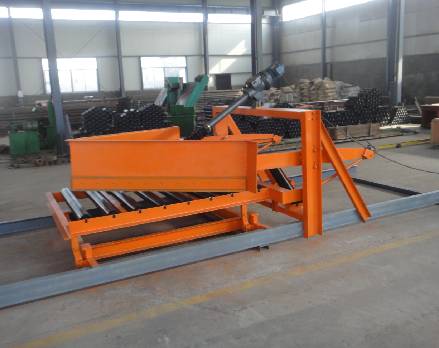 Afrikaans
Afrikaans  Albanian
Albanian  Amharic
Amharic  Arabic
Arabic  Armenian
Armenian  Azerbaijani
Azerbaijani  Basque
Basque  Belarusian
Belarusian  Bengali
Bengali  Bosnian
Bosnian  Bulgarian
Bulgarian  Catalan
Catalan  Cebuano
Cebuano  Corsican
Corsican  Croatian
Croatian  Czech
Czech  Danish
Danish  Dutch
Dutch  English
English  Esperanto
Esperanto  Estonian
Estonian  Finnish
Finnish  French
French  Frisian
Frisian  Galician
Galician  Georgian
Georgian  German
German  Greek
Greek  Gujarati
Gujarati  Haitian Creole
Haitian Creole  hausa
hausa  hawaiian
hawaiian  Hebrew
Hebrew  Hindi
Hindi  Miao
Miao  Hungarian
Hungarian  Icelandic
Icelandic  igbo
igbo  Indonesian
Indonesian  irish
irish  Italian
Italian  Japanese
Japanese  Javanese
Javanese  Kannada
Kannada  kazakh
kazakh  Khmer
Khmer  Rwandese
Rwandese  Korean
Korean  Kurdish
Kurdish  Kyrgyz
Kyrgyz  Lao
Lao  Latin
Latin  Latvian
Latvian  Lithuanian
Lithuanian  Luxembourgish
Luxembourgish  Macedonian
Macedonian  Malgashi
Malgashi  Malay
Malay  Malayalam
Malayalam  Maltese
Maltese  Maori
Maori  Marathi
Marathi  Mongolian
Mongolian  Myanmar
Myanmar  Nepali
Nepali  Norwegian
Norwegian  Norwegian
Norwegian  Occitan
Occitan  Pashto
Pashto  Persian
Persian  Polish
Polish  Portuguese
Portuguese  Punjabi
Punjabi  Romanian
Romanian  Russian
Russian  Samoan
Samoan  Scottish Gaelic
Scottish Gaelic  Serbian
Serbian  Sesotho
Sesotho  Shona
Shona  Sindhi
Sindhi  Sinhala
Sinhala  Slovak
Slovak  Slovenian
Slovenian  Somali
Somali  Spanish
Spanish  Sundanese
Sundanese  Swahili
Swahili  Swedish
Swedish  Tagalog
Tagalog  Tajik
Tajik  Tamil
Tamil  Tatar
Tatar  Telugu
Telugu  Thai
Thai  Turkish
Turkish  Turkmen
Turkmen  Ukrainian
Ukrainian  Urdu
Urdu  Uighur
Uighur  Uzbek
Uzbek  Vietnamese
Vietnamese  Welsh
Welsh  Bantu
Bantu  Yiddish
Yiddish  Yoruba
Yoruba  Zulu
Zulu main parts of belt conveyor
Main Parts of Belt Conveyor
A belt conveyor is a widely used system in various industries for moving materials from one place to another. Its design is engineered for efficiency and effectiveness, making it a staple in manufacturing, mining, packaging, and numerous other fields. Understanding the main parts of a belt conveyor is essential for those looking to optimize the performance and maintenance of these systems.
1. Conveyor Belt
The most critical component of a belt conveyor is, unsurprisingly, the conveyor belt itself. The belt is typically made of woven fabric, rubber, or metal, depending on the application. It serves as the surface on which materials are transported. The choice of belt material is crucial, as it needs to be strong enough to withstand the weight of the materials being moved, while also being flexible enough to navigate around pulleys and bends in the conveyor system. Additionally, the surface of the belt can be textured or plain, depending on the materials it carries and the slope of the conveyor.
2. Pulleys
Pulleys are essential for the operation of a belt conveyor, as they guide the belt along its path and keep it taut. There are generally two types of pulleys in a conveyor system the drive pulley and the return pulley. The drive pulley is connected to a motor and provides the necessary force to move the belt. Meanwhile, the return pulley supports the belt as it loops back to the drive pulley, ensuring the continuous operation of the conveyor.
3. Tension Control System
To maintain optimal performance, a belt conveyor needs a tension control system. This system ensures that the belt is neither too loose nor too tight, which can lead to inefficiency or damage. The tension is adjusted using idler rollers and tensioning devices, which can be manual or automatic. Proper tension is essential to avoid slippage and excessive wear on the belt and pulleys.
main parts of belt conveyor

4. Idlers
Idlers are regularly spaced rollers that support the weight of the conveyor belt and its load as it moves. They help maintain the belt's alignment and reduce friction between the belt and the frame of the conveyor. Different types of idlers are used depending on the application, including troughing idlers for loading and return idlers for the other side of the belt. Proper idler selection and maintenance are crucial for eliminating belt sagging and ensuring smooth operation.
5. Frame
The frame of a belt conveyor provides structural support and houses all the other components. It is typically made from steel or aluminum for strength and durability. The design of the frame must accommodate the specific layout and operational requirements of the conveyor system. A sturdy frame ensures the conveyor remains stable under load, reducing vibrations and potential damage over time.
6. Drive Motor
The drive motor is the heart of the belt conveyor system. It provides the power needed to propel the belt and, subsequently, the materials it carries. The motor's size and type will depend on the application and the load the conveyor needs to handle. Proper selection and maintenance of the motor are essential for reliable operation.
Conclusion
Understanding the main parts of a belt conveyor is crucial for anyone involved in the design, maintenance, or operation of these systems. Each component plays a significant role in ensuring efficient and safe material handling. By paying attention to the conveyor belt, pulleys, tension control system, idlers, frame, and drive motor, industries can optimize their operations and enhance productivity.
-
Revolutionizing Conveyor Reliability with Advanced Rubber Lagging PulleysNewsJul.22,2025
-
Powering Precision and Durability with Expert Manufacturers of Conveyor ComponentsNewsJul.22,2025
-
Optimizing Conveyor Systems with Advanced Conveyor AccessoriesNewsJul.22,2025
-
Maximize Conveyor Efficiency with Quality Conveyor Idler PulleysNewsJul.22,2025
-
Future-Proof Your Conveyor System with High-Performance Polyurethane RollerNewsJul.22,2025
-
Driving Efficiency Forward with Quality Idlers and RollersNewsJul.22,2025





























